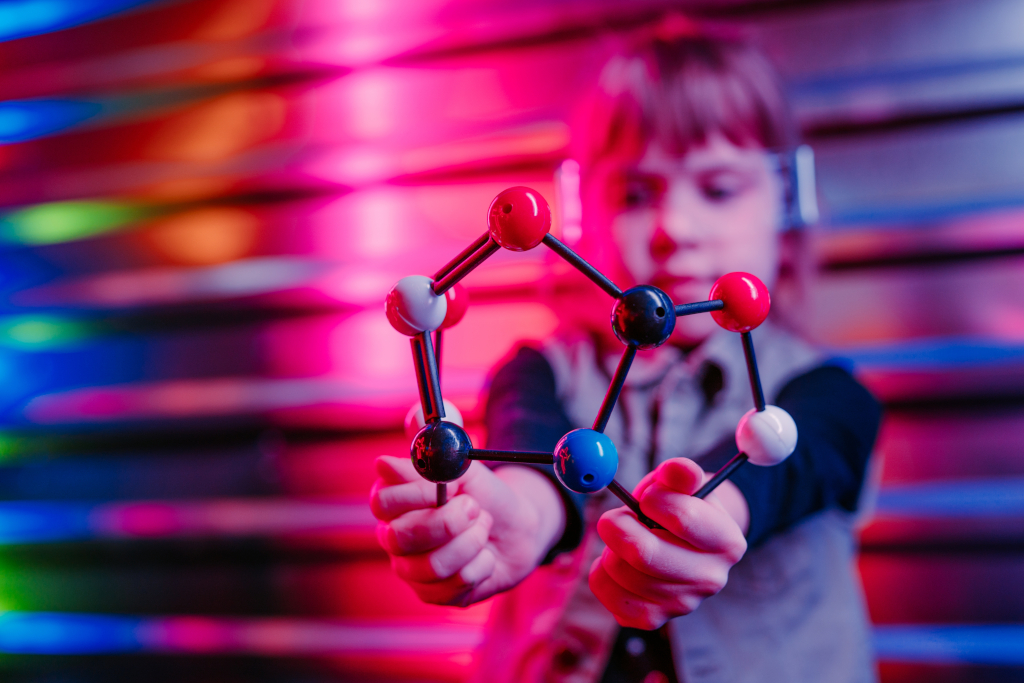It sounds like something straight out of science fiction: seeing an individual atom. A single building block of matter, so small that millions would fit across the width of a strand of hair. So, how can we possibly get images of something a thousand times smaller than even the smallest speck of dust?
Here’s the catch: We can’t use ordinary microscopes. The visible light they rely on has wavelengths far too large to “see” atoms. It’s like trying to find freckles on a grain of sand using a beach ball as a flashlight. So scientists had to get creative—and they did.
The problem with light: Why atoms stay invisible
Human eyes (and traditional microscopes) are limited by the physics of visible light. Light waves are just too big. The average wavelength of visible light is around 400–700 nanometers, but atoms are typically just 0.1 nanometers wide. That means light literally skips right over them.
To tackle this, scientists ditched light altogether and turned to electrons, quantum tunneling, and things so sensitive they can feel a single atom. Seriously.
The unexpected tools that let us “see” atoms
Let’s break down the high-tech heroes making the invisible visible:
Scanning Tunneling Microscopy (STM): Seeing by touching with electrons
Developed in the 1980s, STM was the first technique ever to reveal individual atoms. Here’s how it works:
- A needle-sharp tip moves just above the surface of a material.
- Electrons “tunnel” between the tip and the atoms on the surface.
- The tunneling current changes as the tip passes over atoms, creating a map of their positions.
In 1981, Gerd Binnig and Heinrich Rohrer used STM to image atoms on silicon for the first time—and won a Nobel Prize for it. It marked the first time humanity had truly seen the building blocks of matter.
Atomic Force Microscopy (AFM): The atomic-scale finger
Like STM, AFM uses an ultra-tiny tip to scan a surface—but instead of electrons, it “feels” the surface using atomic-scale forces.
- It works not only on conductors but also on insulators like ceramics and biological samples.
- It can sense stiffness, electrostatic charge, and even magnetic fields, giving more than just “pictures.”
In a 2009 experiment, IBM researchers used AFM to image a molecule of pentacene. The picture clearly revealed not just the positions of atoms, but the bonds between them, like a textbook drawing come to life.
Transmission Electron Microscopy (TEM): Imaging from within
Rather than scanning a surface, TEM uses high-energy electrons shot through an extremely thin sample. The electrons are scattered by atoms inside, forming an image.
The result? TEM has revealed the inner structure of everything from viruses to the arrangement of atoms in graphene sheets. In fact, it was TEM that confirmed the hexagonal structure of graphene—a single layer of carbon atoms—in 2004.
Bonus tools: Cryo-EM and X-ray Crystallography
Other powerful tools lend a hand when things get complicated:
- Cryo-electron microscopy (Cryo-EM): Ideal for biological molecules, like proteins, frozen in time. In 2020, Cryo-EM produced a near-atomic map of the SARS-CoV-2 spike protein, critical in COVID-19 vaccine design.
- X-ray Crystallography: Used to solve the structure of DNA in the 1950s. Instead of a direct image, it uses diffraction patterns to work backward to atomic arrangements.
So… are atomic images real “photos”?
Not quite. These aren’t snapshots in the traditional sense. STM and AFM create 3D maps of electron clouds or physical contours. TEM and Cryo-EM give us densities, not colors. The resulting images are beautiful, but they’re closer to topographic maps or probability charts than to selfies of atoms.
The takeaway: A new way of seeing everything
Seeing atoms changed everything—from designing better materials to understanding life at its most fundamental. And the story keeps unfolding. Each new experiment brings us closer to reshaping the world, atom by atom.
So the next time you flip on a microscope or look at something under a lens, remember: There’s an entire universe of structure just beneath the surface. We’re just beginning to truly see it.




Leave a Comment